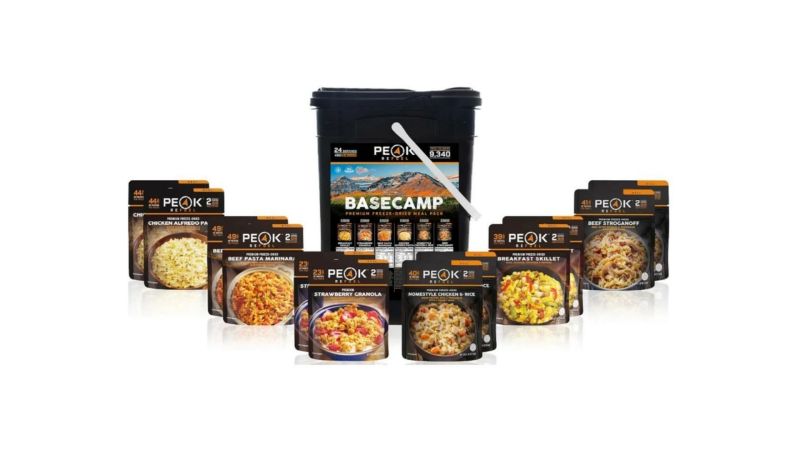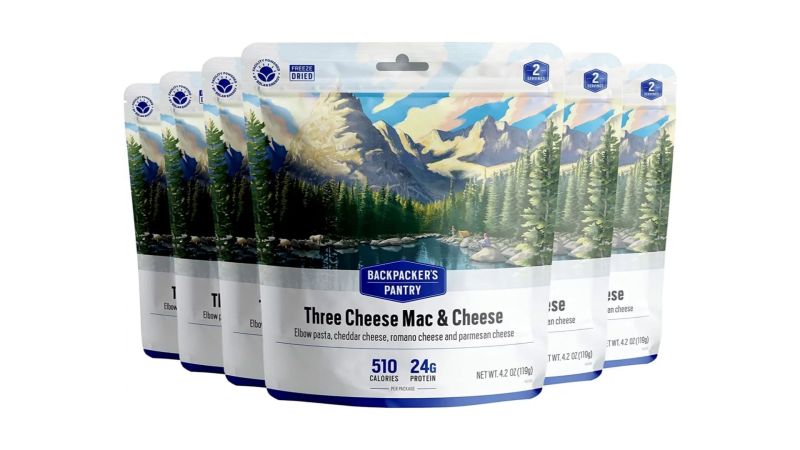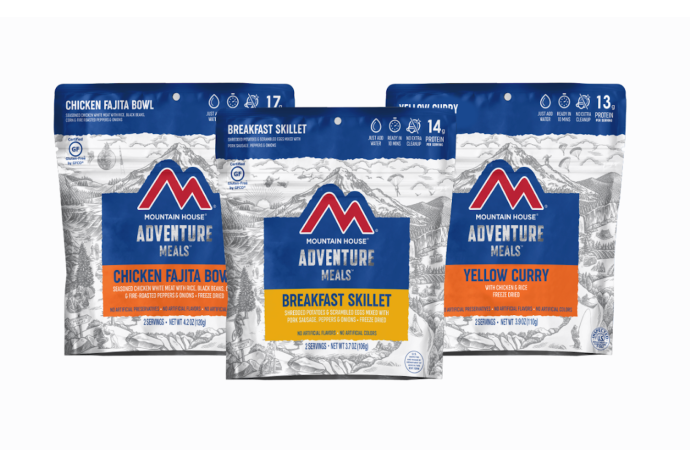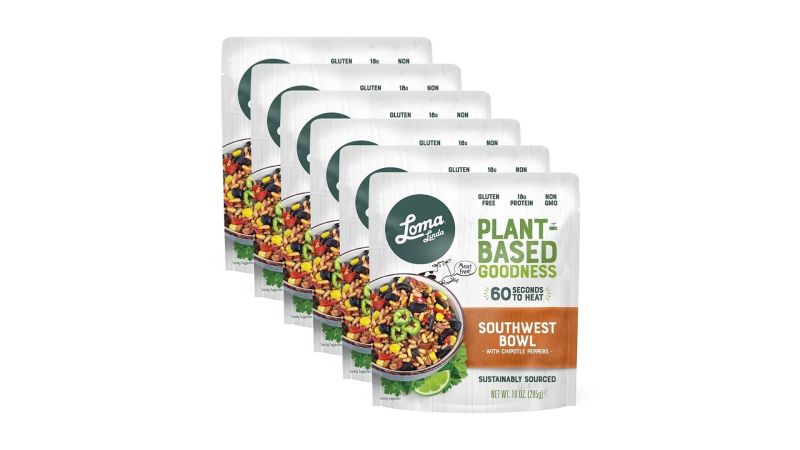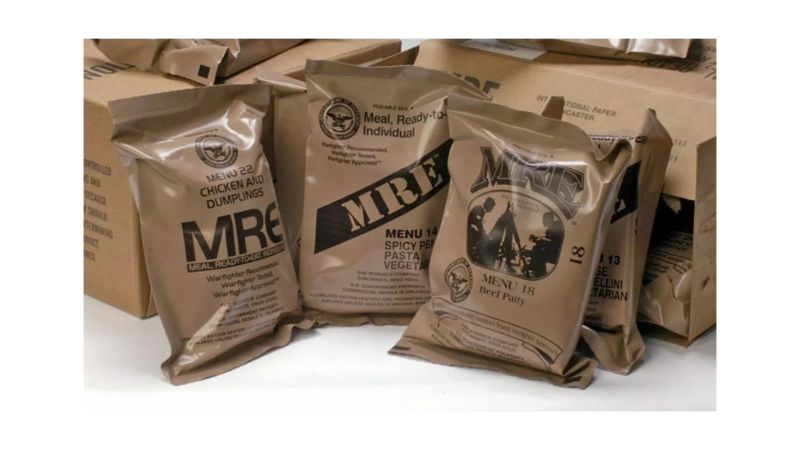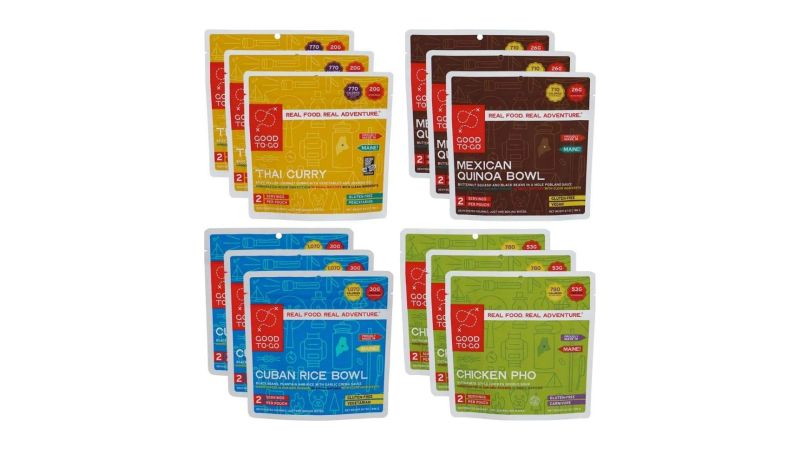We may earn revenue from the products available on this page and participate in affiliate programs.
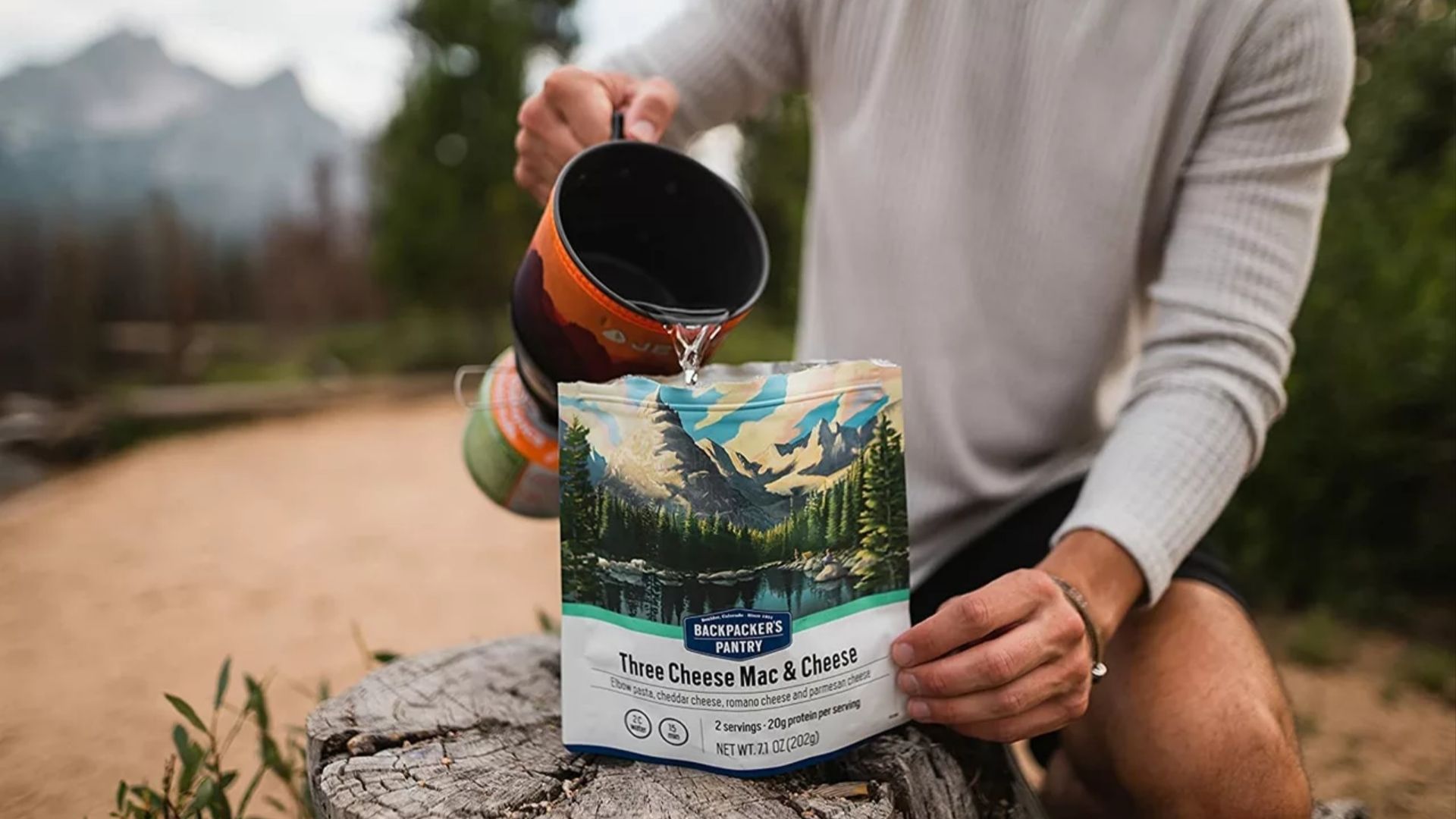
Backpacking meals, also referred to as camping or hiking meals, are the morale-boosting frosting atop the literal mountain you just scaled. A great backpacking meal can make the difference between a vibrant, energy-filled adventure and a dreary flashback to the worst rucks in basic training. After all, you can’t and shouldn’t walk all that way on an empty stomach.
Enter our comprehensive — and appetizing — guide to the best backpacking meals for your next hike. We did your homework so you don’t have to. From calorie-dense powerhouses for the gym rats out there to plant-based vegan options, we’ve got you covered via extensive research and even hands-on taste-testing of a few brands. Take a peek, excite those taste buds, and as always, happy shopping!
- Best Overall: Peak Refuel Freeze-Dried Meals
- Best Budget: Backpacker’s Pantry Freeze-Dried Backpacking & Camping Food
- Honorable Mention: Mountain House Adventure Meals
- Best Vegan: Loma Linda Plant-Based Complete Meal Solution
- Best High-Calorie: Genuine Military Surplus MREs
- Best Dehydrated: GOOD TO-GO Dehydrated Food Kit
Best Overall
Peak Refuel Freeze-Dried Meals
Best Budget
Backpacker’s Pantry Freeze-Dried Backpacking u0026 Camping Food
Honorable Mention
Mountain House Adventure Meals
Best Vegan
Loma Linda Plant-Based Complete Meal Solutions
Best High-Calorie
Genuine Military Surplus MREs
Best Dehydrated
GOOD TO-GO Dehydrated Food Kit
Things to consider before buying a backpacking meal
Calories and fats
Here is a measure of how dense and filling backpacking meals will be. Your needs will vary based on how intense your adventures are, among other lifestyle needs. Gym rats and bodybuilder types may benefit from higher-calorie, higher-protein camping foods just the same as an average Joe embarking on a trek up Everest. On the other end of the scale, casual nature enthusiasts going for strolls may not need those immense energy reserves and would be just fine off lighter menu items.
Shelf life
How long will your camping meals last? While perhaps not as crucial as this would be for survival kits and emergency supplies, it’s nice to know that your surplus of Mountain House packs won’t rot in the next few months. Typical methods of preservation such as dehydration and, more popularly freeze-drying, ensure that camping meals can lay dormant in your pantry for years. Most typically stay fresh for two to five years, but some products designed to pull double-duty as survival stashes can last up to 30 years. Do note that dehydrated meals will often have slightly shorter life spans because dehydration doesn’t evacuate as much moisture as freeze-drying.
Portability
Here’s a tidbit that folks may not always think about when stuffing their packs full of other essentials such as tents and sleeping bags: Can you fit your meals in your backpack? More often than not, backpacking meals prove to be a simple commodity that nearly anyone can just toss in their bag and forget. They’re usually packaged in compact bags and can squeeze between the rest of your goodies. Just pack wisely if you intend to carry a buffet lineup of meals or perhaps an MRE or two, the latter choice being bulky and better-suited to large rucksacks.
FAQs about backpacking meals
Q. Why are backpacking meals important?
A. As you journey into the wilderness, whether it’s a casual nature walk or a grueling excursion, you need sustenance to fuel yourself; carbs for energy and protein for muscles, etc. Backpacking and hiking meals will provide all of that in a delectable package to ensure you don’t get sluggish from hunger out on the trail.
Q. How much do backpacking and hiking meals cost?
A. Most meals cost between $10 and $15, with our Best Value winner at $8 to $9 per pouch. Large variety packs are available, mostly running between $120 and $150 per bucket (usually 12 pouches). Military MREs ring in at $40 to $50 for a four-pack and are really for those desperately hunting for that chili mac and cheese spread.
Q. How are backpacking and hiking meals prepared?
A. Prepackaged camping food is as mind-numbingly easy to prepare as can be. Do you have hot water? Perfect, you’re done. Pour the recommended amount into the pouch, let it stew in its own flavors for the recommended time, and ta-da. MREs include heaters activated by water to warm food while also including beverage mixes, snacks, and toiletries.
Q. Are there breakfast items available for morning adventures?
A. You bet your sweet bippy there are. While less common, there are plenty of breakfast items for morning treks, with some companies offering more or less variety. Oatmeal and granola are the most common dishes sold in stores, but breakfast skillets with eggs, veggies, and meats are also available.
Q. What are the differences between freeze-dried and dehydrated camping foods?
A. Dehydrating is a simple and ancient method of heating and drying food over some time to evaporate moisture, typically 80 percent or so. It’s a cost-effective method that most folks can try through various methods. Freeze-drying is more complex, as food is flash-frozen at low pressure before gradually raising temperatures. This evaporates up to 95 percent of moisture without harsh heat, which may degrade nutritional content.
Q. Are backpacking meals healthy?
A. In the sense that they provide hikers with sustenance, fats, and protein to fuel their expeditions, yes, they are quite nutritious and effective and deliver needed energy. But given many products’ high-calorie counts and fat content, they can be over-consumed, especially when taken frequently with minimal physical activity. Save your freeze-dried gratin potatoes for when it’s time not to be a couch potato.
Final thoughts
Peak Refuel wins top marks for its well-rounded, easy-to-prepare meals guaranteed to load you with the necessary fuel for the journey ahead. Being among the most filling and flavorful also plays in its favor. Backpacker’s Pantry makes for a solid choice for those searching for quality backpacking meals on a budget as it gives up nothing to save you a couple of dollars per bag. And Mountain House still stands as a solid consideration for quick, tasty meals that can be enjoyed by rookie and veteran adventurers alike.
Methodology
As journalists and fellow adventurers, we always seek to deliver the most informative yet honest reviews possible in every buyer’s guide we curate. This guide has been curated mostly through extensive research and deep dives into company specs and, more importantly, real-world consumer experiences. While Amazon continued to serve as a useful encyclopedia of customer input, the widespread availability of backpacking meals has also allowed other sources to aid in curating our guide, including REI, Scheels, Walmart, and numerous food brand websites. Their availability has made it relatively easy for this author to perform some hands-on nitpicking on a few brands.
Quick stops at my local REI rewarded me with meals from Mountain House and Peak Refuel to sample for this guide, plus a previous guide to survival food kits. I examined taste, how filling they were, and how easy they were to prepare using the recommended methods. As a current service member, I’m no stranger to MREs either and was able to deliver feedback based on real-world experiences with such items. The best meals sacrificed little-to-none in terms of taste and texture versus something you’d buy in cans from the grocery store while effectively fitting their niche (vegan-friendly or high in calories).
As always, readers are encouraged to learn more about how we at Task & Purpose typically curate our buyer’s guides.
